From ancient times to present, many rich and diverse civilizations have formed and disappeared that we cannot fully know or predict. Therefore, anthropologists and archaeologists have been doing their best to search for all documents and historical traces of related ruins in order to disseminate knowledge to the current generation. Although associated with ancient history, there are many relics whose meaning we still cannot fully understand and realize. Below is a list of the most famous landmarks ranked in the world in this field of study:
10. Egyptian obelisk

One of the most prominent names is the “Unfinished” Obelisk tower, with a height greater than any memorial tower ever built. This is known as the greatest ancient tower ever known, located near the land north of the quarry in Aswan, Egypt.
The length was calculated to be up to 42m and most of the project was abandoned, as its name suggests, when a few cracks appeared on the rocks making the wall during construction. Many opinions believe that Queen Hatshepsut at that time was the one who approved the erection of that tower, which was planned to be completed with a material weight of 1,200 tons.
Besides this site, a foundation for another structure was also discovered in 2005 in the Aswan quarry. This is said to be a museum – mausoleum and is currently protected by the Egyptian government as a valuable historical relic.
9. Dwarka – Mysterious Indian city
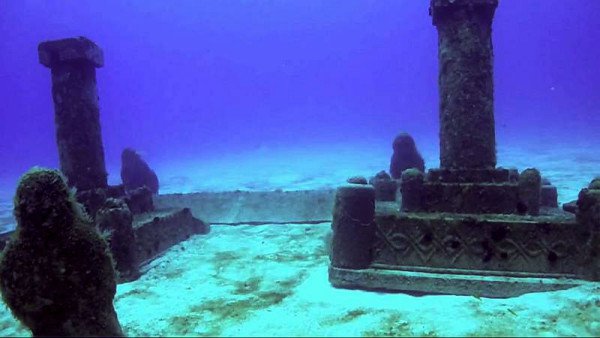
Dwarka is one of the most ancient cities in Indian history. Measuring 5 miles long and 2 miles wide, the city is located deep under the sea off the Gulf of Cambay on the west coast of India.
This discovery has attracted the attention of many scientists because its age reaches 5,000 years, filled with long-term historical values of an entire human civilization. Oceanographic experts also used sonar imaging systems to locate many ruins, supporting the possibility that the city was submerged by melting ice at the end of the Ice Age. The interesting thing here is that many carved and architectural details are preserved intact. Dwarka also means Golden City – a name that commemorates the Hindu god Krishna.
8. Menga dolmens – Spain
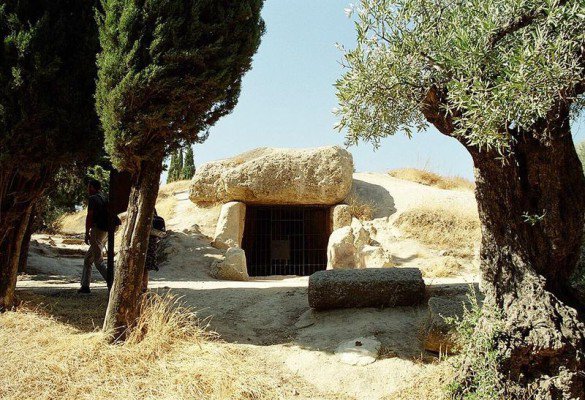
Menga Dolmen is a mound built in the form of an ancient tomb, with a date extending to the 3rd millennium BC. It is located near Antequera, Malaga (Spain), famous for being one of the largest constructions in Europe.
The heaviest rock weighs up to 180 tons. Built like a natural high ground, the main storage room consists of 5 roof walls supported by 3 square pillars, cut deep to match the floor. Many illustrations of people are painted on the walls. When this monument was discovered in the 19th century, archaeologists also found the skeletons of several hundred people left inside.
7. Ggantija – Island nation of Malta

Older than Stonehenge and the Pyramids, the two Ggantija temples at Xaghra, Gozo are among the most important archaeological ruins in Malta. These sites are best known for their Neolithic structures, which appeared around 3600-2500 BC. Since 1772, this relic became famous and was gradually discovered in 1872.
This architectural complex consists of two temples surrounded by a large wall separating them from the outside with special construction techniques when metal tools and carts to support people had not yet appeared. Century. 20, the government has restored the monument and continued to research many related aspects to preserve it in the most effective way. Thanks to its unique beauty, UNESCO later recognized this place as a World Cultural Heritage.
6. Yonaguni Memorial – Japan
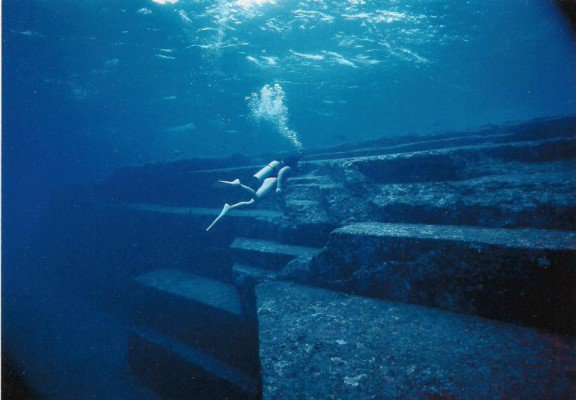
The Yonaguni Memorial Site is an underwater stone ruin off the coast of Yonaguni at the southern end of the Ryukyu Islands. In 1986, Kihachiro Aratake – a diver accidentally discovered this relic at a depth of about 25m below sea level. Aratake was immediately surprised by its magnificent beauty with its square design of many walls, steps, columns and even stones carved in the shape of human faces.
However, this project is not alone here. There are up to 10 other similar ruins found near Yonaguni, including a castle, five temples and another built like an ancient stadium. What’s more interesting is that all of these places are connected by fixed roads.
5. Olmec rock head – Mexico

Olmec ruins are evidence of an ancient civilization in Central America and the south of North America, which had a profound influence on the culture of the Aztecs and Mayans, flourishing in the Gulf coast of Mexico in the years 1200-400 BC. It was built by skilled and flamboyant artisans and sculptors: they made very elaborate statues, tools, masks and stone stele. Among measurements, head carvings are popular. most popular in the archaeological and scientific world, when 17 artifacts were found in the great Olmec area of La Venta, San Lorenzo and Tres Zapotez (Mexico). All of them have similar carvings, flat noses, thick lips and similar head motifs. Many opinions have long asserted that it is a way to illustrate warriors or leaders, chiefs, or even a symbol for an entire tribe.
4. Gobekli Tepe – Turkey
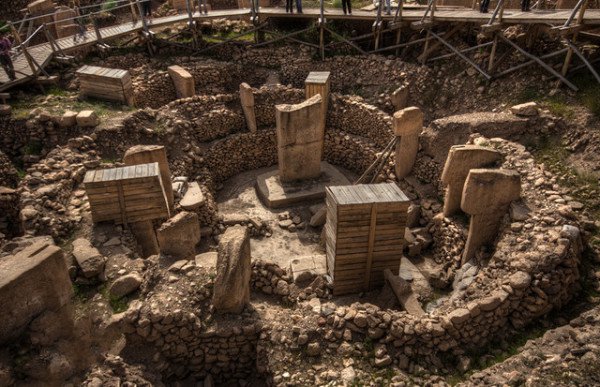
Göbekli Tepe is classified as a Neolithic site (appearing from 9600-7300 BC), with a circular shape and structure placed on a hill. Many hand-carved rocks were arranged logically by ancient people, when there were no metal tools to support them.
The site first became widely known when a study conducted by Istanbul University and the University of Chicago was published in 1963. It was later discovered with other accompanying ruins, starting The first was the excavation in 1995 by Professor Klaus Schmidt in cooperation with the German Archaeological Academy.
Göbekli Tepe is known as a profound development step in human society. In the future, many plans are being made to preserve and build forms of dissemination of knowledge about this valuable historical evidence.
3. Carnac Rock – France
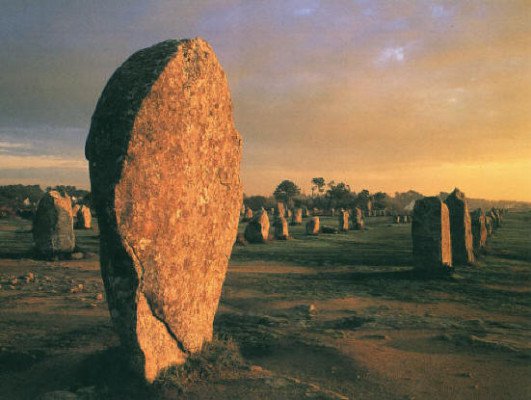
The Carnac Stones are a set of megaliths arranged around the village of Carnac in Brittany (France), including vertical dolmens on the ground. The distribution length can be up to 1km with hundreds of stone pillars placed close together.
Carnac is the largest megalithic historical site in the world. Scientists believe that they originated in the Neolithic period around 4000 BC and continued for another 2000 years. There are three groups that have been arranged in characteristic ways: Menec, Kemario and Kerlescan.
Menec: 11 rows of converging stones stretching up to 1,165m, 100m wide.
Kermario: 1,029 standing stones, 1,300m long.
Kerlescan: only 555 rocks, extending farther east, including 13 rows with a length of 800m, from 80cm to 4m high.
2. Giant stone bridge Costa Rica

These stone balls are one of the biggest mysteries of archeology, discovered in the Diquis triangle region of Costa Rica. Since the 1930s, hundreds of such stones have been recorded and data collected, ranging in size and diameter from a few centimeters to up to 2 meters.
A total of 186 such objects were found as early as 1963, and today there are 300. The largest rock weighs 16 tons, and most of them are made of granodiorite, a hard rock material, often tempered through fire.
Many scientists believe that a previous tribe made these stones, although there is no trace or related date. There are other theories about their origin coming from Atlantis, or even from the random hand of nature. As for their purpose, it is still a mystery without a proper answer.
1. Moai stone statue – Easter Island
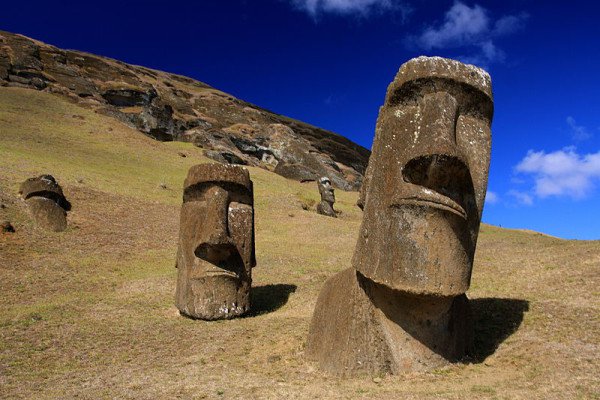
Easter Island is a Polynesian island in the southeast Pacific Ocean, famous for more than 900 giant stone statues dating back hundreds of years. Among them, the monolithic human-shaped stone statues – called Moai – carved by the Rapa Nui people around 1250-1500 AD always attract the most attention.
This is proof that its creator must have been a master of sculpture and engineering, as its beauty and sophistication far surpass the rest on the island. There are 887 Moai statues, the tallest is 21m tall, weighing more than 160 tons. Moai statues have large heads with pointed noses and chins, mostly created from volcanic rock. Previously, everyone thought that only the head was the final work, but an excavation 100 years ago showed that the whole body was buried underground along with them, with many unique tattoos engraved. and draw it up.
Easter Island and its statues are still a great mystery of the world. The Moai are also part of Rapa Nui National Park, which was designated a World Cultural Heritage Site by UNESCO in 1995.
Reference: thevintagenews




